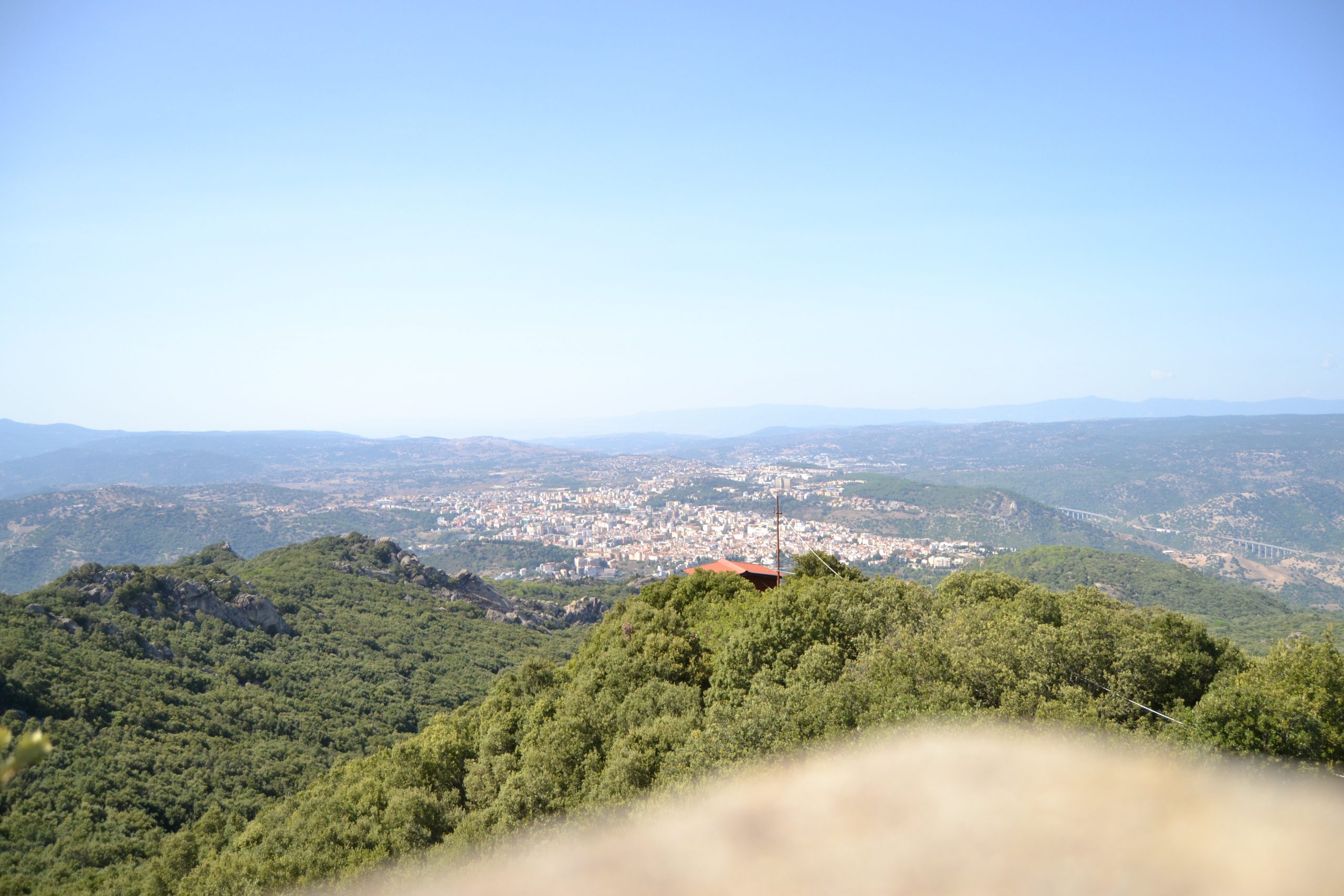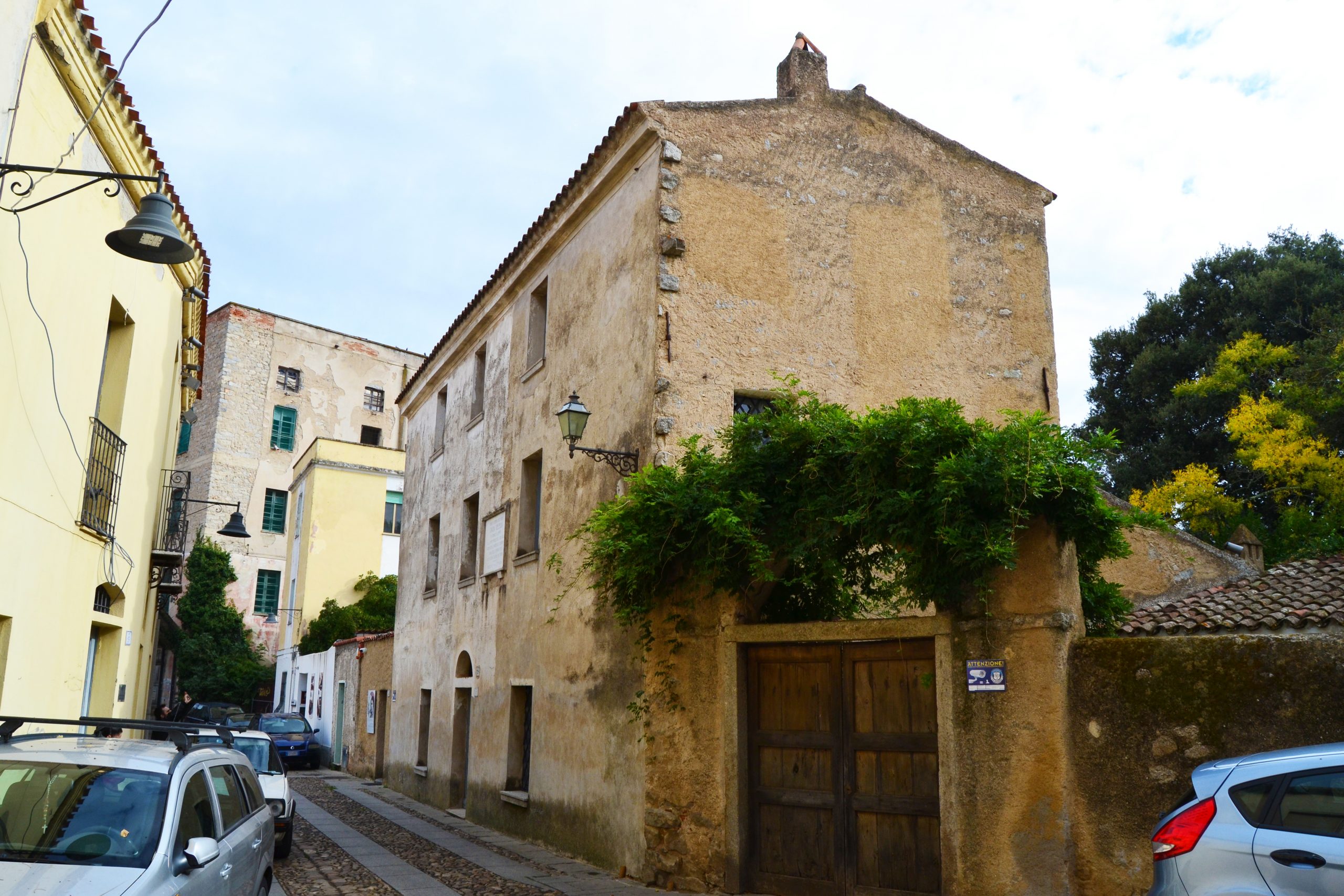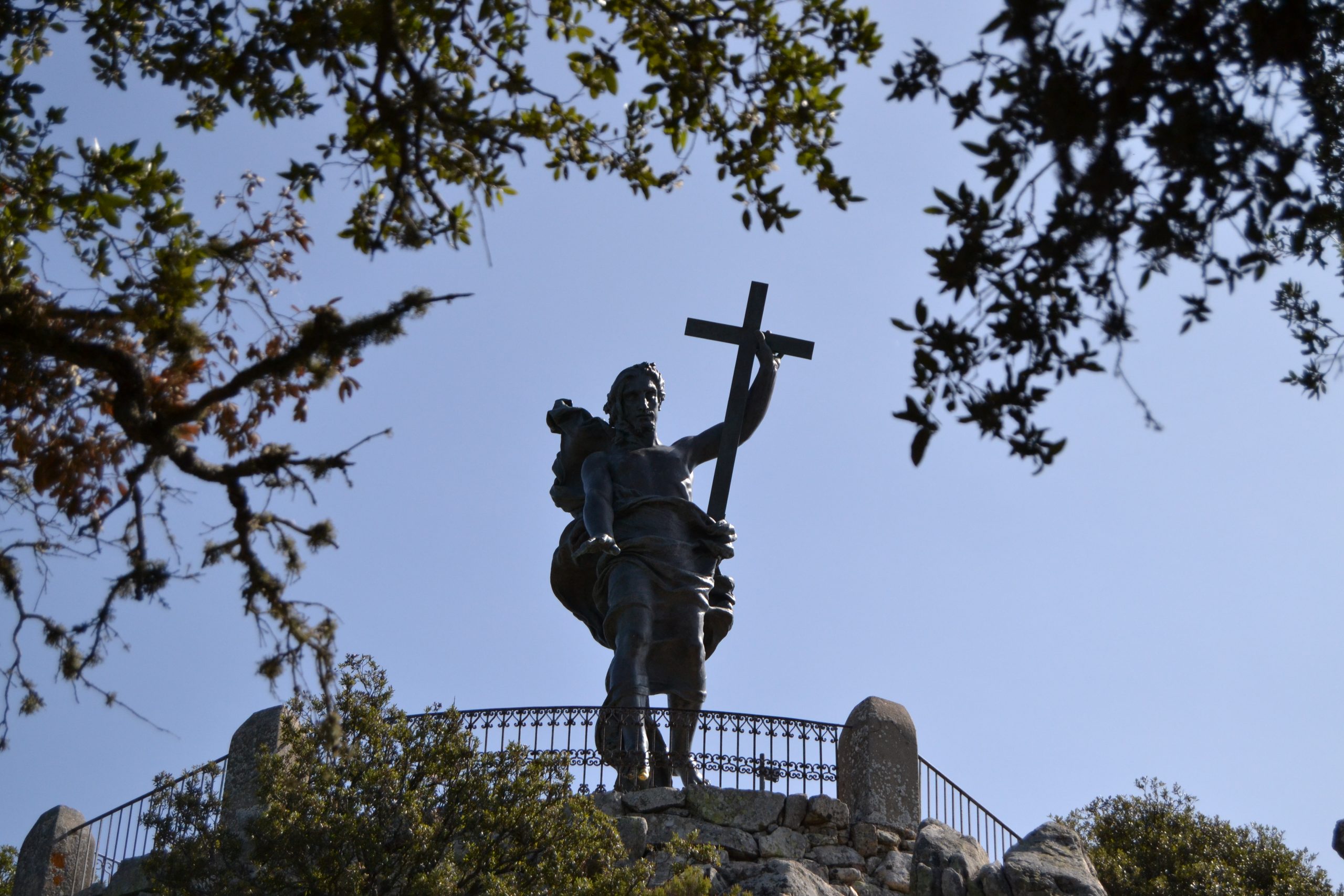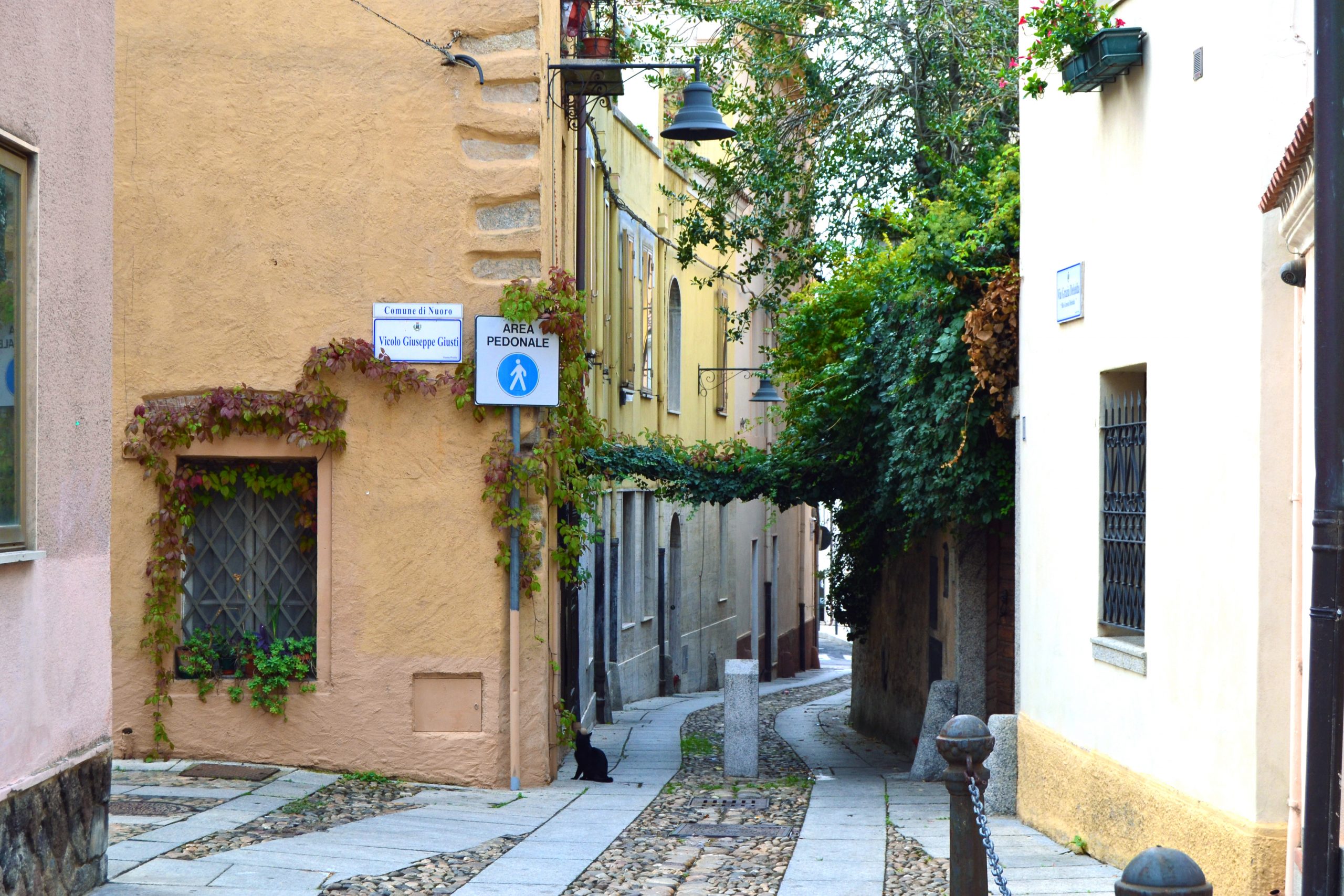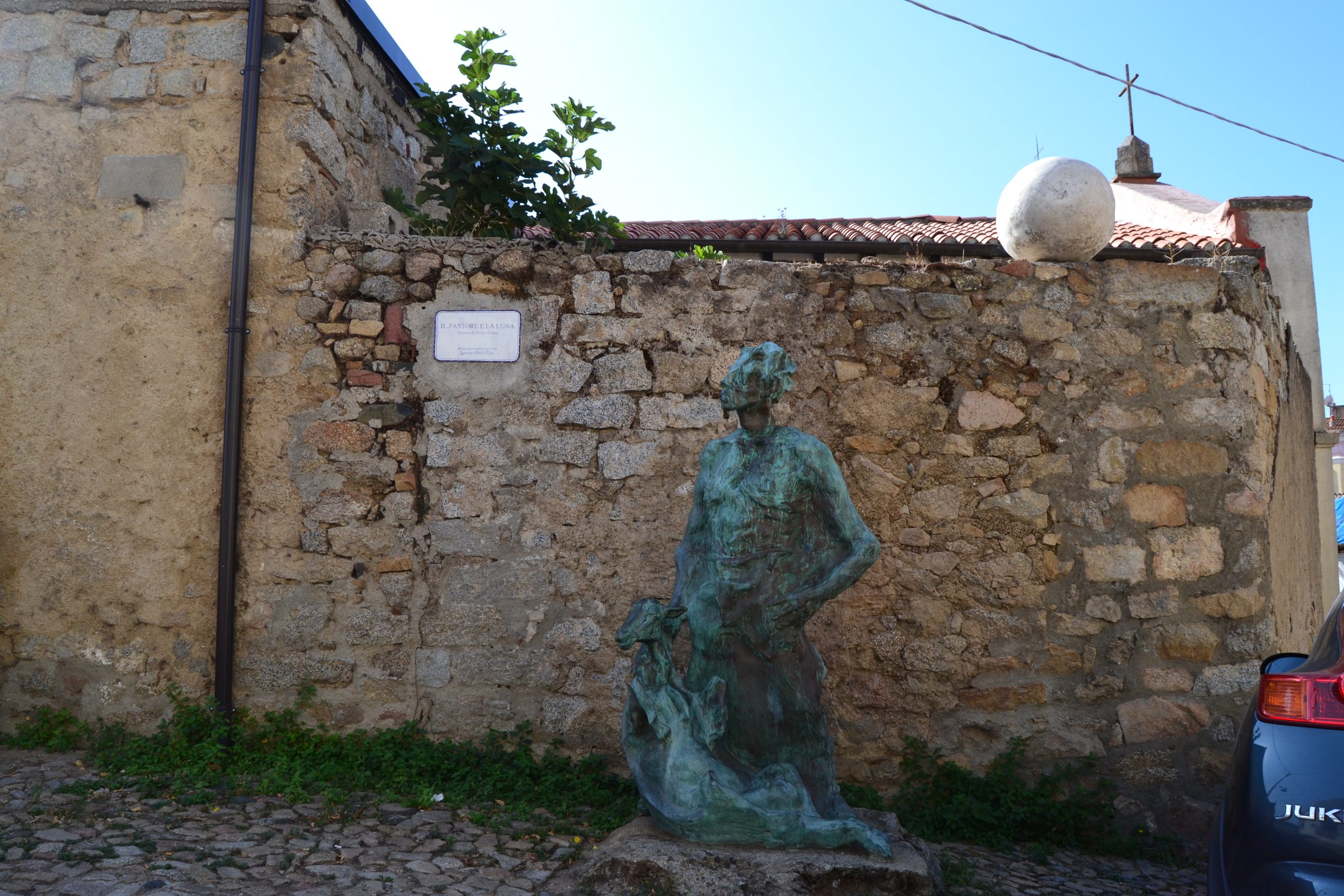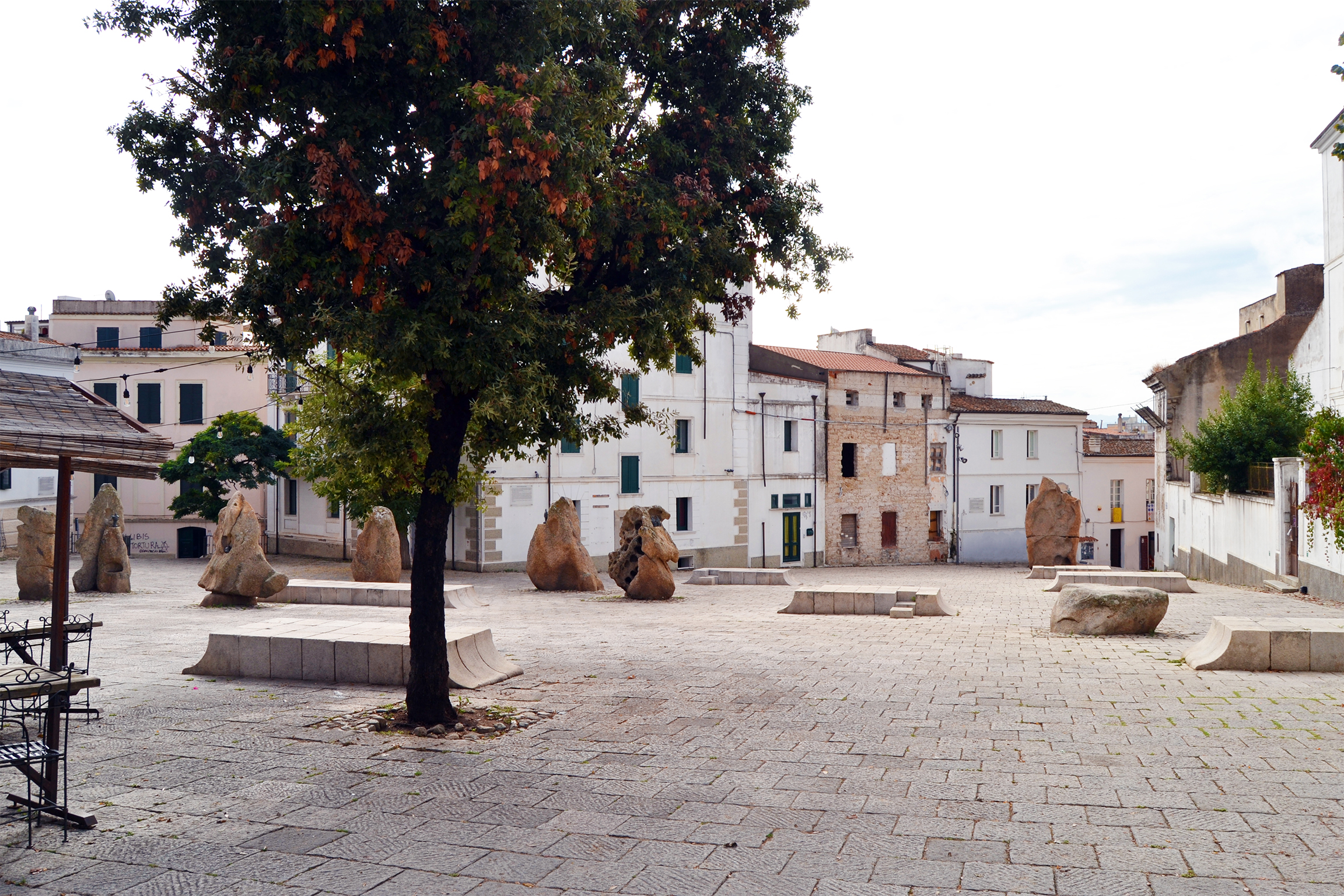“How long does it take? I can’t tell you how long it takes by bicycle. A few hours. I went to Nuoro many years ago, on horseback. The road is beautiful, and the city is beautiful, yes; the air is good, the people are good. There are no fevers there, like here, and everyone can work and earn a living”
Translation of the provided text by Grazia Deledda, Canne al vento (Reeds in the Wind),, ed. Ilisso, 2005, p.54
How to Get There
By Bus
Various ARST (Regional Sardinian Transport Company) bus lines connect to Nuoro from different centers on the island. Additionally, you can also check with various private companies such as Deplano , Redentours and Ranieri.
By Car
From Cagliari, Sassari, Olbia, and Oristano, you can reach Nuoro via the SS 131 d.c.n (Nuoro Central Branch) Abbasanta-Nuoro-Olbia. Nuoro is crossed by State Road 129, Transversale Sarda, which traverses the island from Orosei to Macomer, where it connects to the 131, the main artery.
Nuoro, the capital of the homonymous province, is a town of approximately 35,000 inhabitants located in the heart of Sardinia, at an altitude of about 554 meters above sea level. The settlement stretches across a granite plateau, at the foothills of Mount Ortobene (955 meters above sea level) and among the hills of Ugolio, Biscollai, Cucullio, Tanca Manna, Thigoloboe, Monte Gurtei, and Sant’Onofrio. To the west, the city extends towards the Corte plateau.
The name Nuoro is derived from the medieval Nuor, which in turn comes from the older Nugor. According to some scholars, Nugor might be a word of oriental origin, meaning “house,” “light,” or “fire.” Others, on the other hand, believe that the toponym Nuoro comes from the Paleosardinian root nur, from which the term nuraghe is derived.
The city of Nuoro is known for being an important cultural center and for being the birthplace of some of the most important Sardinian-Nuorese artists.
Among its main attractions, Nuoro boasts six visitable museums: the Man Museum, which houses a collection of modern and contemporary art; the Giorgio Asproni Archaeological Museum; the Grazia Deledda Museum, located in the Nobel Prize-winning writer’s birthplace; the Costume Museum curated by the ISRE (Regional Ethnographic Institute), collecting artifacts from all over Sardinia; the Ceramic Museum; and the Spazio Ilisso, which houses the Museum of Sardinian 20th-century sculpture. In the city center, you’ll also find the archaeological site of Tanca Manna, above which stands the Monastery of the Barefoot Carmelites designed by the French architect Savin Couelle, famous for outlining the original architecture of the Costa Smeralda.
Nuoro is also a lively city, with a wide range of cultural and entertainment offerings hosted both in external venues and in the municipal theater. The city hosts numerous festivals and events, with one of the most significant being the Feast of the Redeemer, held annually around August 29th, featuring religious and secular celebrations.
Nuoro is a fascinating city, rich in history, culture, and traditions, still represented in the sublime manifestations of craftsmanship and culinary art. It is an ideal destination for those who want to experience the most authentic Sardinia.
Historical overview
The earliest traces of human settlements in the territory of Nuoro date back to the 4th-3rd millennium BCE, as evidenced by domus de janas (cave dwellings), hypogeic necropolises, giant tombs, and sacred wells. In the Su Nuraghe district, in one of the highest areas of the city of Nuoro, is the archaeological complex of Tanca Manna. The complex, covering an area of about 7 hectares, consists of a single-tower nuraghe dating back to the Middle Bronze Age and a village with characteristics of the early phase of the Nuragic civilization.
The location of the nuraghe and the village was determined by the choice of occupation and territorial control by the protohistoric populations of the Nuoro area. The presence of similar structures in the immediate vicinity, such as the nuraghi Tertilo, Ugolio, the ruins of Monte Gurtei, and Biscollai, confirms this hypothesis.
Inhabited since the Nuragic era, Nuoro developed as an administrative and religious center from the Middle Ages. In 1592, the city had an estimated population of 1800 inhabitants; in 1601, the first mayor, the legal representative of the vassals, was elected, and in 1613, the Inquisition tribunal was established.
On July 21, 1779, with the papal bull “Eam inter caeteras” by Pope Pius VI, the episcopal see, previously moved from Galtellì in 1138, was reinstated under the name “Diocese of Galtellì-Nuoro,” subject to the archdiocese of Cagliari. At the same time, the bishop’s residence was moved from Galtellì to Nuoro.
From the second half of the 19th century, Nuoro began to develop as an important administrative center. In 1807, it became the seat of the Prefecture Court, in 1836 it became a city, and in 1848 it became the seat of the Administrative Division and Intendency, effectively becoming a third Sardinian province after Cagliari and Sassari. This development was partly due to the settlement of Piedmontese officials from the Kingdom of Sardinia (established in 1720) and continental traders. This period was characterized by significant changes in Nuoro’s society.
Historical Monument: Mulino Gallisai
A historical monument from this period is the Mulino Gallisai, built in the second half of the 19th century and later raised in the 1920s. It stands as a testament to the most prosperous industry in the barbaric capital. The old mill, constructed near the birthplace of Nobel Prize winner Grazia Deledda, features facades without specific articulations, following an urban character, with orderly arched openings on the ground floor and rectangular ones on the upper floors. In the 1920s, three additional floors were added, maintaining the architectural lines of the existing building and reaching a height of almost 20 meters.
In addition to the main milling activity (drawing people even from villages far from Nuoro), the complex housed various other activities, including a pasta factory (likely producing at least some traditional local pastas) and an “ice factory.” The “Molino Gallisai ” also generated electricity, distributed for private and other uses. This is where the energy for Nuoro’s first public electric lighting in 1915 was sourced, as remembered by Salvatore Satta in “Il giorno del giudizio.”
In 1991, a fire caused the partial collapse of the structure, and another in 2022 destroyed much of its historical memory. Today, the Mulino retains stories, testimonies from workers around the 1960s, and photographic relics that recall and inspire new dreams for various enhancement projects for a place that, in the early 1900s, brought great prosperity to the people of Nuoro.
-
"The throb of the Mill gave him a sense of emotion, almost dismay: it seemed like the heartbeat of a heart, a new heart that rejuvenated the old wild land. In that throb inside, Giacinto's blood pulsed, and Efix felt the urge to cry thinking of him. There he is, he always seems to see him, tall, serene, white with flour like a young plant covered with frost, purified by work and the intention of good."
From Grazia Deledda's "Canne al vento" (Reeds in the Wind), published by Ilisso in 2005, page 201
Moti de Su Connottu (Riots of Su Connottu)
On October 6, 1820, the then King of Sardinia, Vittorio Emanuele I, issued the infamous “Edict of Enclosures.” This provision, presented with the intention of improving and making agricultural and livestock activities more productive, disrupted the use of “ademprivi”, communal demesne lands of various sizes on which the population could collectively exercise the right of exploitation, for example, for wood, acorns, and grazing. The edict put an end to a millennia-old “economic culture” that had characterized the life and coexistence of the Sardinian people, allowing the wealthy to seize vast portions of territory. Subsequently, they imposed payment for pastures on poor shepherds, generating widespread discontent that soon erupted into violence and disorder. This situation provided authorities with the pretext to “arrest and hang” without due process.
Later, in 1865, under the Kingdom of Italy (established in 1861), a law was approved that definitively abolished the institution of the “ademprivio”, a form of collective land ownership, and imposed particularly burdensome taxation on dwellings. This law was strongly contested by the people of Nuoro, who felt betrayed by the previous assurances to respect Sardinian traditions and customs. On April 26, 1868, at the height of tension, several hundred citizens stormed the then municipal palace of Nuoro, Palazzo Martoni, and set fire to the deeds of sale of demesne lands. This event, known as Riots of Su Connottu, a name derived from the revolt’s motto “Torrammus a su Connottu!” (Let’s return to the known, i.e., the old system), represented a serious social crisis with profound repercussions on the history of Sardinia.
Every year, on the occasion of this significant event, the cultural association Paskedda Zau, named after the woman who ignited the protest, organizes informative events about the events that involved the city of Nuoro.
Nuoro in the 20th Century
In the 20th century, Nuoro emerged as a significant cultural center, becoming the home to some of the most important Sardinian artists.
Among them, Giorgio Asproni, along with Francesco Cucca, Attilio Deffenu, Giovanni Antonio Sulas, and Palazzi Gonario Pinna, made significant contributions to the political landscape. Pietro Mastino and Antonio Mura left an indelible impact in the same field. Antonio Ballero distinctly marked his career as a journalist, while Salvatore Cambosu distinguished himself as a writer and literary figure. Leopoldo Carta contributed his poetry to local culture, and Raffaele Ciceri immortalized reality through the lens of his camera. Francesco Ciusa, a renowned sculptor, and Giovanni Ciusa Romagna, a celebrated painter, both enriched the world of art. Francesco Congiu Pes made his mark in the field of painting. Nicolina Deledda, along with her sister Grazia Deledda, a Nobel laureate in literature, significantly contributed as a writer. Mario Delitala was a versatile artist. Pasquale Dessana captivated with his writing, and Salvatore Fancello Priamo played a significant role as a doctor. Goffredo Guiso enriched our historical understanding, while Mariangela Maccioni and Raffaello Marchi elevated the world of art. Pietro Mura Costantino was a renowned artist. Bernardino Nivola was a famous sculptor, and Giovanni Pintori left his mark on the local art scene. Antonio Pirari, Piero Pirari, and Giovanni Antonio Pirari Varriani were well-known artists. Giacinto Satta was an eminent poet, while Sebastiano Satta shone in the legal field.
The works of these artists were appreciated not only in Sardinia but also in Italy and around the world.
The expansion of services and administrative job opportunities in Nuoro also contributed to the city’s cultural development. Many residents from neighboring towns moved to Nuoro, bringing with them their traditions and culture. As a testament to the growing importance of the city, on January 27, 1928, the diocese definitively changed its name from “Diocese of Galtellì-Nuoro” to “Diocese of Nuoro.” In 1926, Grazia Deledda won the Nobel Prize in Literature.
In 1927, Nuoro regained its provincial status. In 1931, the city had a population of 9,300 inhabitants.
Dove mangiare e dove dormire
Where to Eat and where to Stay
In Nuoro, you can experience the rich cultural and gastronomic heritage of the region. To fully enjoy it, you can find high-quality food in nearby restaurants and comfortable accommodations in the historic center of Nuoro. For information on where to eat and sleep in Nuoro, you can consult the official website of the Municipality or get in touch with the tourism office.
These resources can provide detailed information on restaurants, accommodations, and other tourist attractions in Nuoro. Additionally, it’s advisable to contact the local tourism office for personalized advice and information tailored to your needs.


